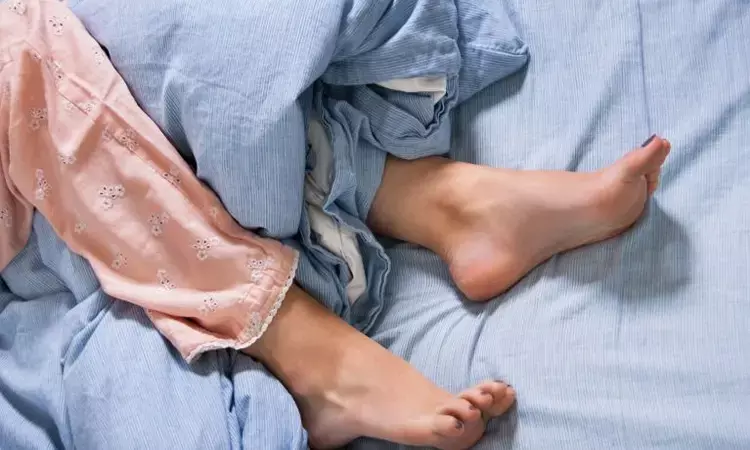- Home
- Medical news & Guidelines
- Anesthesiology
- Cardiology and CTVS
- Critical Care
- Dentistry
- Dermatology
- Diabetes and Endocrinology
- ENT
- Gastroenterology
- Medicine
- Nephrology
- Neurology
- Obstretics-Gynaecology
- Oncology
- Ophthalmology
- Orthopaedics
- Pediatrics-Neonatology
- Psychiatry
- Pulmonology
- Radiology
- Surgery
- Urology
- Laboratory Medicine
- Diet
- Nursing
- Paramedical
- Physiotherapy
- Health news
- Fact Check
- Bone Health Fact Check
- Brain Health Fact Check
- Cancer Related Fact Check
- Child Care Fact Check
- Dental and oral health fact check
- Diabetes and metabolic health fact check
- Diet and Nutrition Fact Check
- Eye and ENT Care Fact Check
- Fitness fact check
- Gut health fact check
- Heart health fact check
- Kidney health fact check
- Medical education fact check
- Men's health fact check
- Respiratory fact check
- Skin and hair care fact check
- Vaccine and Immunization fact check
- Women's health fact check
- AYUSH
- State News
- Andaman and Nicobar Islands
- Andhra Pradesh
- Arunachal Pradesh
- Assam
- Bihar
- Chandigarh
- Chattisgarh
- Dadra and Nagar Haveli
- Daman and Diu
- Delhi
- Goa
- Gujarat
- Haryana
- Himachal Pradesh
- Jammu & Kashmir
- Jharkhand
- Karnataka
- Kerala
- Ladakh
- Lakshadweep
- Madhya Pradesh
- Maharashtra
- Manipur
- Meghalaya
- Mizoram
- Nagaland
- Odisha
- Puducherry
- Punjab
- Rajasthan
- Sikkim
- Tamil Nadu
- Telangana
- Tripura
- Uttar Pradesh
- Uttrakhand
- West Bengal
- Medical Education
- Industry
Women with premenopausal bilateral oophorectomy at increased RLS risk: JAMA

Rochester, Minnesota: Women undergoing bilateral oophorectomy for a benign indication prior to menopause are at increased risk of restless legs syndrome, finds a recent study in the journal JAMA Network Open.
Restless legs syndrome (RLS), a neurological disorder, is associated with an irresistible desire to move the legs in response to unpleasant sensations and uncomfortable feelings. It is more prevalent in women than in men. Female hormones has been suggested to be involved in the disorder's pathophysiology.
Nan Huo, Department of Health Sciences Research, Mayo Clinic, Rochester, Minnesota, and colleagues aimed to determine whether women who underwent premenopausal bilateral oophorectomy were at increased risk of restless legs syndrome.
For the purpose, the researchers performed a cohort study using data from the Mayo Clinic Cohort Study of Oophorectomy and Aging–2 for a population in Olmsted County, Minnesota. It included 1653 women who underwent premenopausal bilateral oophorectomy before the age of 50 years for a benign indication between 1988 and 2007 and 1653 age-matched women (of same age plus or minus 1 year) in a reference group.
The researchers conducted follow-upuntil the end of the study period (ie, December 31, 2014).
Main outcome was diagnosis of restless legs syndrome, as defined using Diagnostic and Statistical Manual of Mental Disorders (Fifth Edition) criteria.
Among 3306 women, the median (interquartile range) age at baseline was 44.0 (40.0-47.0) years.
Key findings of the study include:
- Women who underwent bilateral oophorectomy, compared with women who did not undergo this procedure, had a greater number of chronic conditions at the index date (eg, 300 women [18.1%] vs 171 women [10.3%] with ≥3 chronic conditions), were more likely to have obesity (576 women [34.8%] vs 442 women [27.1%]), and were more likely to have a history of anemia of any type (573 women [34.7%] vs 225 women [13.6%]), iron deficiency anemia (347 women [21.0%] vs 135 women [8.2%]), and restless legs syndrome before the index date (32 women [1.9%] vs 14 women [0.8%]).
- Women who underwent bilateral oophorectomy prior to natural menopause had a higher risk of restless legs syndrome after the index date compared with women in the reference group (120 diagnoses vs 74 diagnoses), with an adjusted hazard ratio (HR) of 1.44.
- After stratification by indication for the bilateral oophorectomy, there was an increased risk of restless legs syndrome among women without a benign ovarian condition (HR, 1.52) but not among women with a benign condition (HR, 1.25).
- Treatment with estrogen therapy through the age of 46 years in women who underwent bilateral oophorectomy at younger ages was not associated with a difference in risk.
"This cohort study found that risk of restless legs syndrome was increased among women who underwent bilateral oophorectomy prior to menopause, especially those without a benign ovarian indication," concluded the authors.
The study titled, "Association of Premenopausal Bilateral Oophorectomy With Restless Legs Syndrome," is published in the journal JAMA Network Open.
DOI: https://jamanetwork.com/journals/jamanetworkopen/fullarticle/2775661
Dr Kamal Kant Kohli-MBBS, DTCD- a chest specialist with more than 30 years of practice and a flair for writing clinical articles, Dr Kamal Kant Kohli joined Medical Dialogues as a Chief Editor of Medical News. Besides writing articles, as an editor, he proofreads and verifies all the medical content published on Medical Dialogues including those coming from journals, studies,medical conferences,guidelines etc. Email: drkohli@medicaldialogues.in. Contact no. 011-43720751


